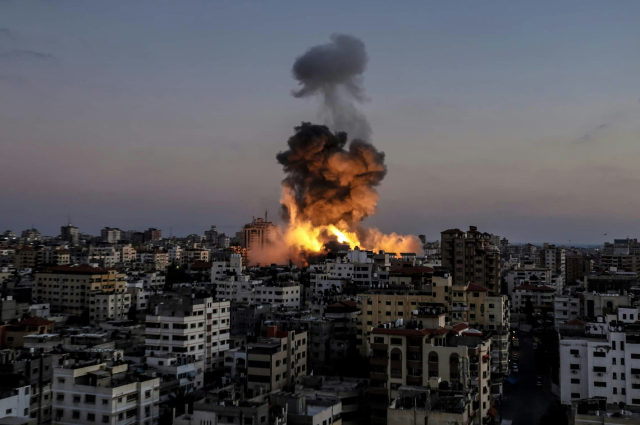
Photo by Mohammed Ibrahim on Unsplash/ Representative Image
The explosion that shattered the evening calm in Kanpur's Mishri Bazar on 1st October serves as a stark reminder of the dangers lurking in urban marketplaces across India. When a blast powerful enough to be heard within a 500-metre radius rocks a crowded commercial area, injuring eight people including a woman, it demands serious introspection about regulatory failures and the casual attitude towards public safety that permeates many Indian cities.
The Immediate Impact
The blast occurred around 7:15 pm on 1st October evening, when markets typically witness peak activity. Two scooters bore the brunt—one was completely destroyed, while the second suffered significant damage. Eight individuals were injured, with six requiring hospitalization at Ursula Hospital. Three were later transferred to PGI Lucknow for specialized treatment. Authorities confirmed all injured persons are out of danger, and two have since been discharged.
The psychological impact extended far beyond those physically hurt. Witnesses described scenes of panic as people fled the market, uncertain whether this was something more sinister. Shopkeepers abandoned their stores, customers scattered, and within minutes the bustling market had transformed into a scene of confusion and terror.
Joint Police Commissioner Ashutosh Kumar's statement that authorities are investigating whether this was "an accident or a conspiracy" reflects the initial uncertainty that gripped the city. While investigations now point toward illegal firecracker storage as the likely cause, the fact that such possibilities needed examination speaks to the vulnerabilities urban spaces face today.
Uncovering the Underground Trade
The response from law enforcement was swift and comprehensive. Police teams, bomb disposal squads, and forensic experts converged on the site immediately. Kanpur Commissioner Raghubir Lal's preliminary assessment suggested the explosion may have been triggered by a "sutli bomb," a crude explosive device often manufactured alongside firecrackers. However, investigators are examining all angles, including technical malfunctions such as scooter battery failures.
The investigation revealed deeply concerning facts about the area. The bomb disposal squad recovered substantial quantities of illegal firecrackers from the blast site and surrounding areas, including a garment shop. This confirms that Mishri Bazar and the nearby Kotwali Khilona Market area have become hubs for illegal firecracker manufacturing and storage—a dangerous reality that residents may have been unaware of until disaster struck.
The owner of one damaged scooter is being questioned as part of the investigation. Authorities have traced both vehicles and are conducting inquiries with those riding them. These steps highlight a troubling pattern: in areas where illegal firecracker trade flourishes, ordinary citizens often become unwitting victims of a dangerous underground economy they had no part in creating.
The Systemic Problem
What makes this incident particularly significant is not its uniqueness but rather how commonplace such risks have become. Across urban India, illegal firecracker operations flourish in residential and commercial neighbourhoods, creating ticking time bombs that endanger thousands. Despite Supreme Court guidelines restricting firecracker manufacturing and sale, enforcement remains patchy and ineffective across most cities.
The Mishri Bazar area, situated in a Muslim-dominated locality near the toy market, has long been associated with firecracker trade. While legitimate businesses serve important cultural and economic functions during festivals, illegal operations create serious hazards that licensed businesses are designed to avoid through proper safety measures.
Illegal firecracker manufacturing bypasses essential safety protocols. Proper storage facilities, fire safety equipment, adequate ventilation, and safe distances from residential areas are all absent in these clandestine operations. The volatile chemicals used in firecracker production require specific handling procedures and storage conditions. When these safety measures are missing, any spark—literal or metaphorical—can trigger catastrophe.
The economics driving this underground trade are straightforward. By avoiding licensing fees, safety compliance costs, and taxation, illegal operators undercut legitimate businesses while earning substantial profits. What gets lost in this equation is the human cost: workers exposed to dangerous chemicals without protection, residents living unknowingly next to explosive stockpiles, and the general public going about their daily business in spaces where disaster could strike at any moment.
The Path Forward
Fortunately, the Kanpur blast didn't result in fatalities. But this stroke of luck cannot be allowed to breed complacency. This incident was a warning shot—a preview of what could happen if illegal operations continue unchecked in urban areas across the country.
Several concrete steps need immediate implementation to prevent future tragedies:
- Comprehensive Safety Audits: Municipal authorities must conduct thorough audits of all commercial areas, particularly those known for firecracker trade, to identify illegal operations. These audits must be regular, systematic exercises rather than one-time responses prompted by disasters.
- Community Awareness: Public awareness campaigns about the dangers of illegal firecrackers, coupled with accessible complaint mechanisms, would help citizens become active participants in ensuring their own safety rather than passive victims of hidden risks.
No More Business as Usual
The Kanpur blast should serve as a watershed moment for urban safety across India. Such incidents can no longer be treated as isolated accidents or unfortunate mishaps. They are symptoms of deeper governance failures that put millions of citizens at risk daily in cities and towns nationwide.
The residents of Mishri Bazar were fortunate—the blast caused injuries but no deaths. However, luck is not a safety strategy, and the next incident might not have such a fortunate outcome. The question is not whether another blast will occur in some Indian city, but when and where—and whether authorities will have taken sufficient action to prevent it.
Urban governance must evolve from reactive crisis management to proactive safety assurance. The goal should be cities where marketplaces are genuinely safe, regulations are enforced consistently, illegal operations cannot flourish in the shadows, and citizens can go about their lives without fear of sudden disaster lurking in everyday spaces.
Kanpur has had its warning. The lessons are clear, the solutions are known, and the responsibility for action lies squarely with those entrusted with public safety. The time to act is now, before the next blast turns warning into tragedy.
. . .
References:
